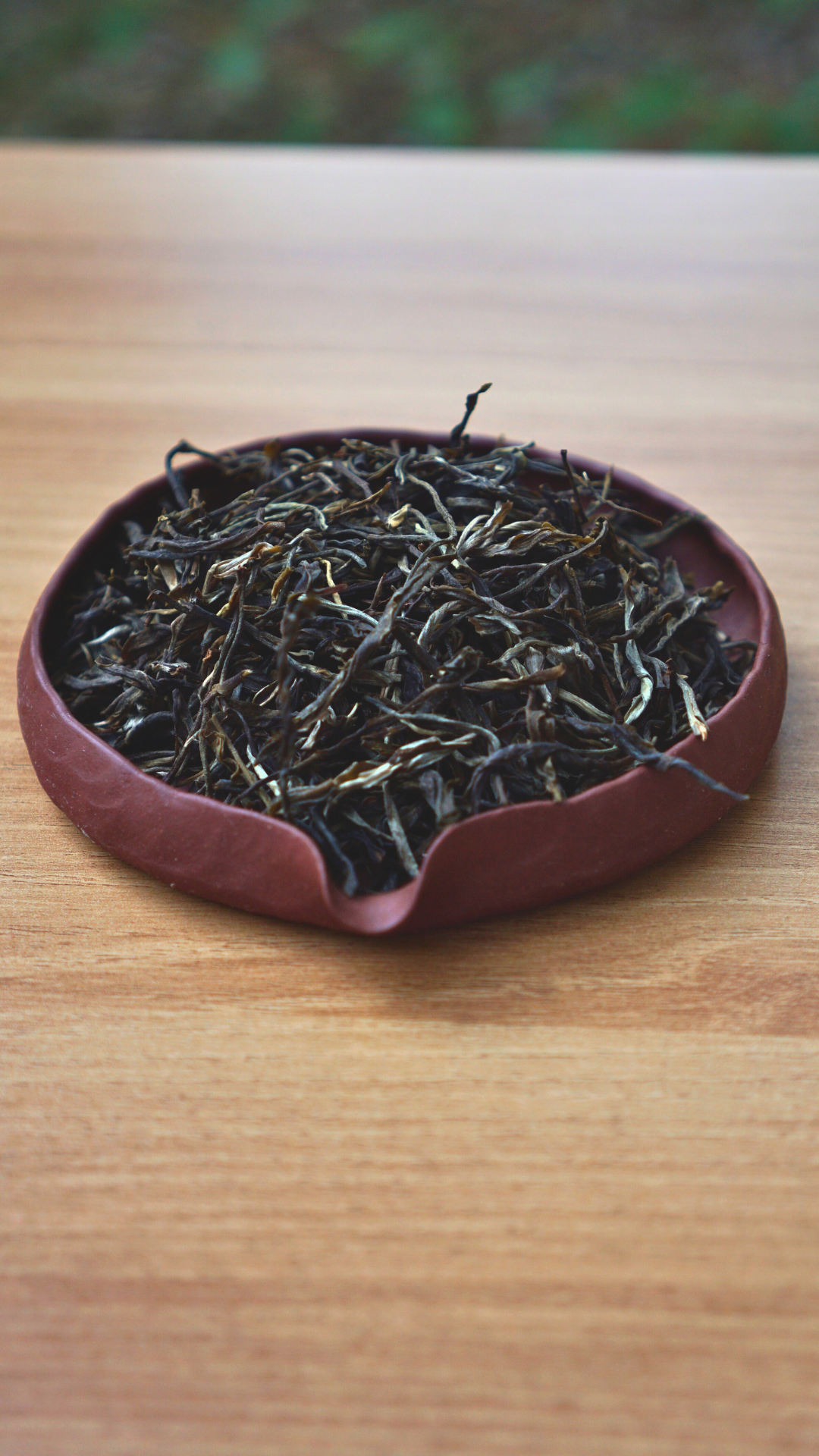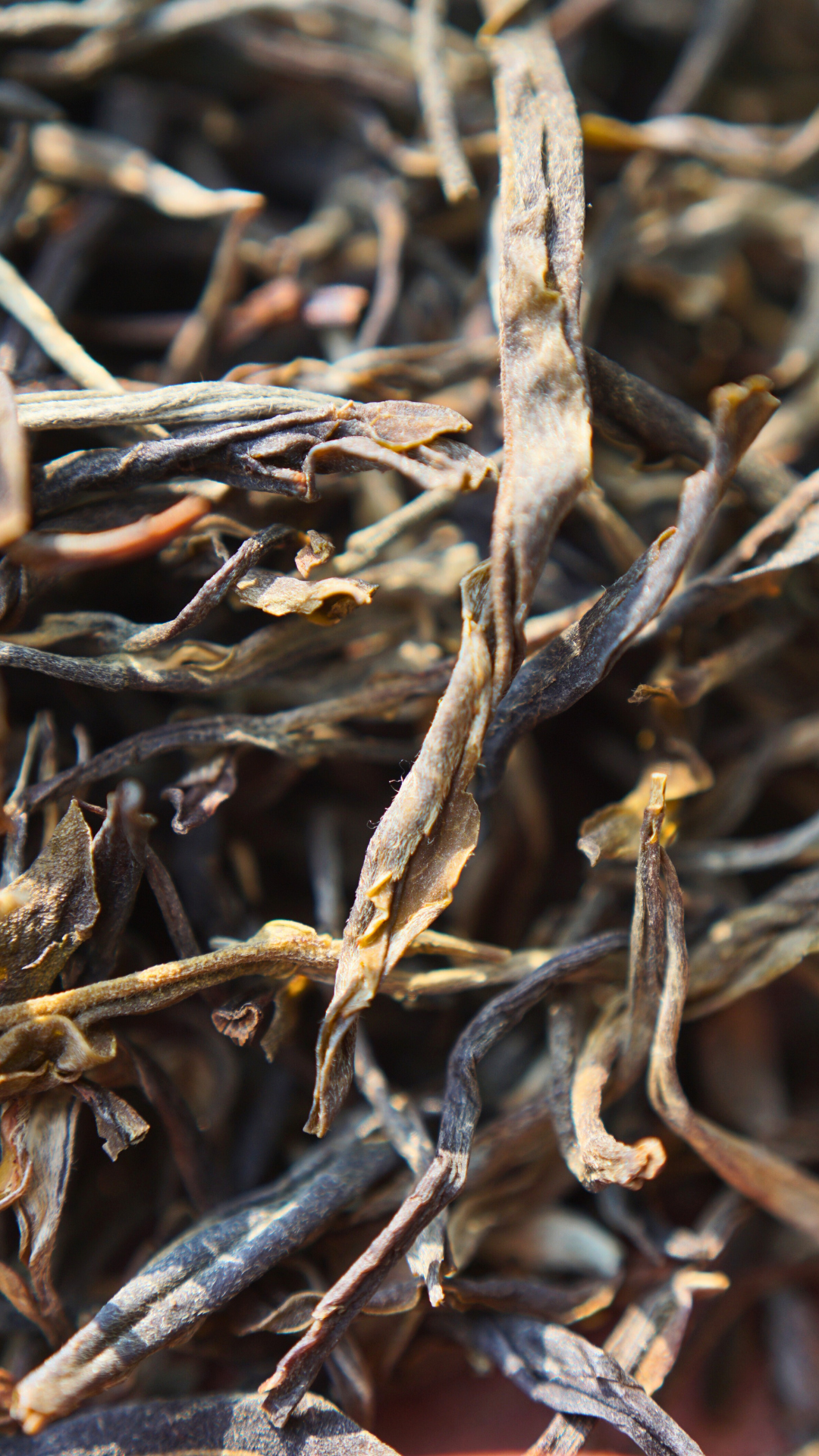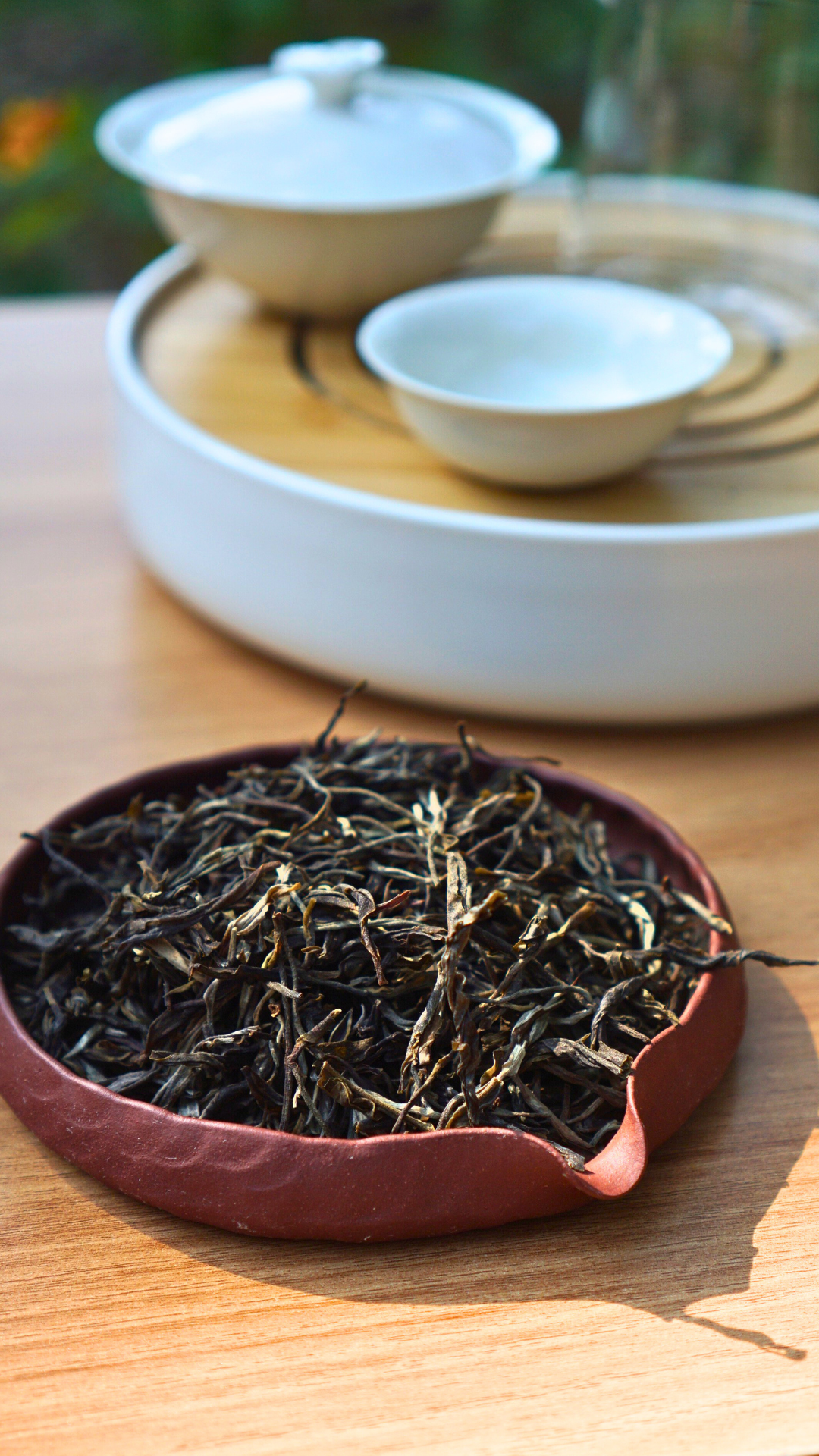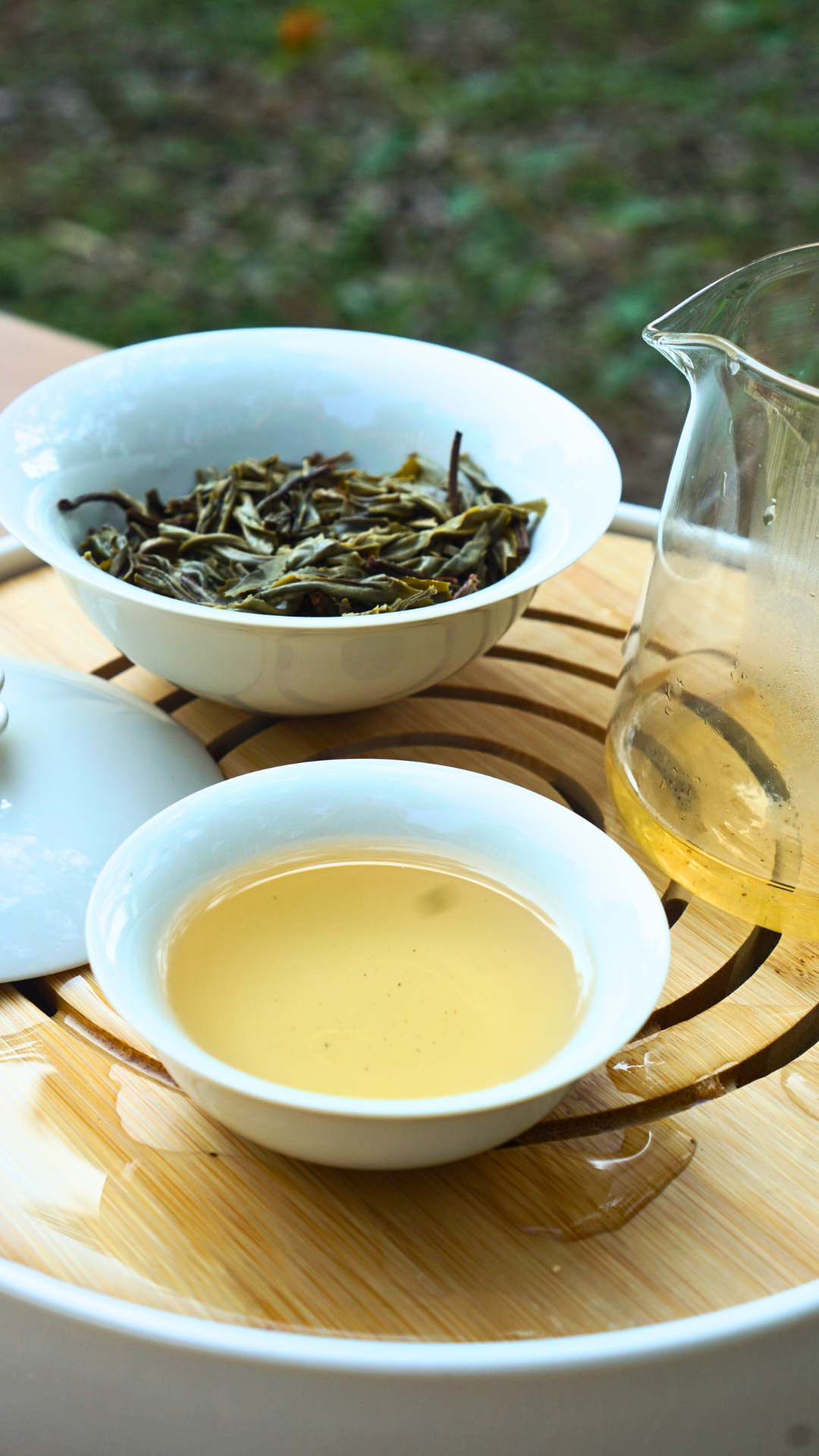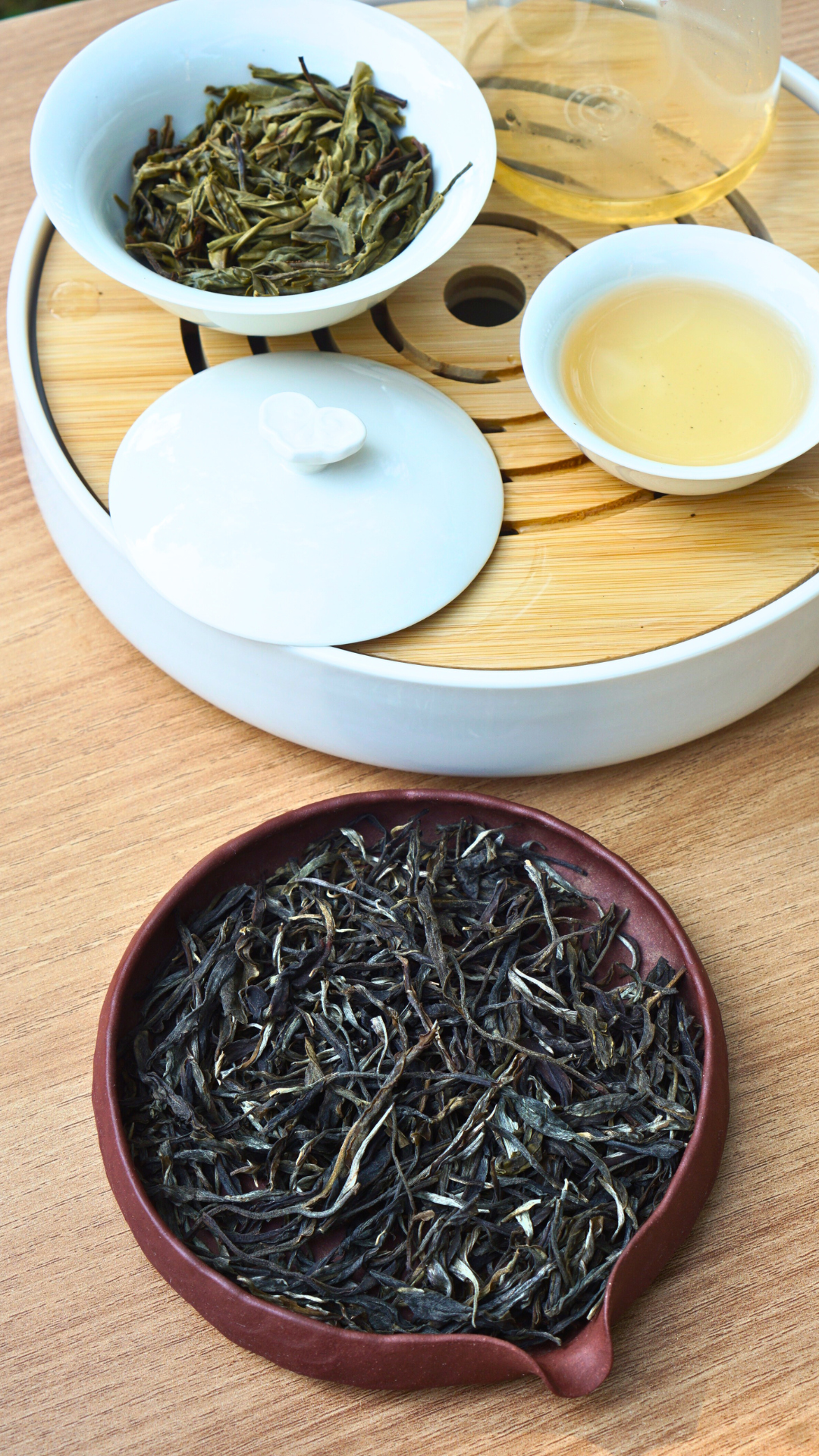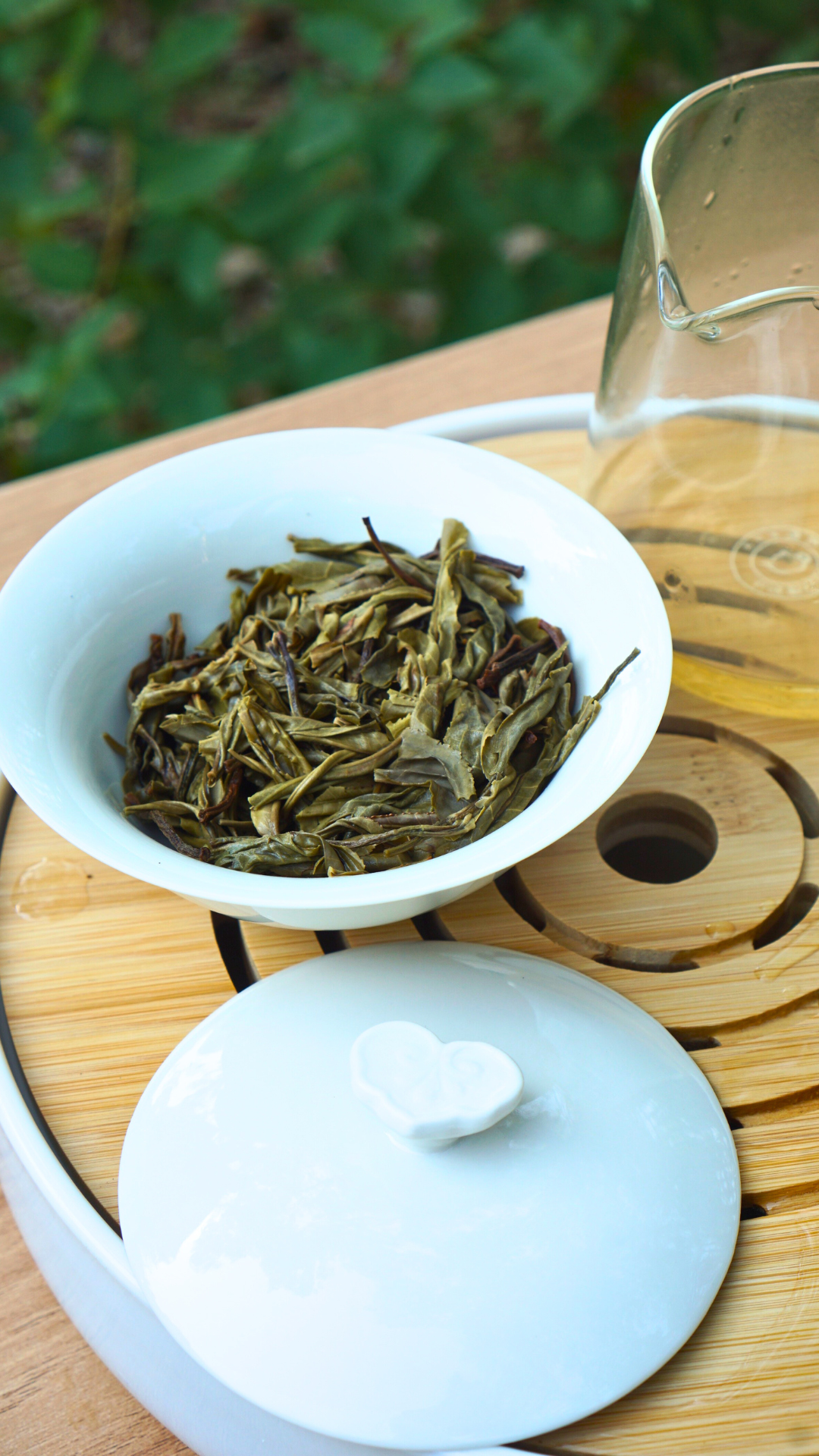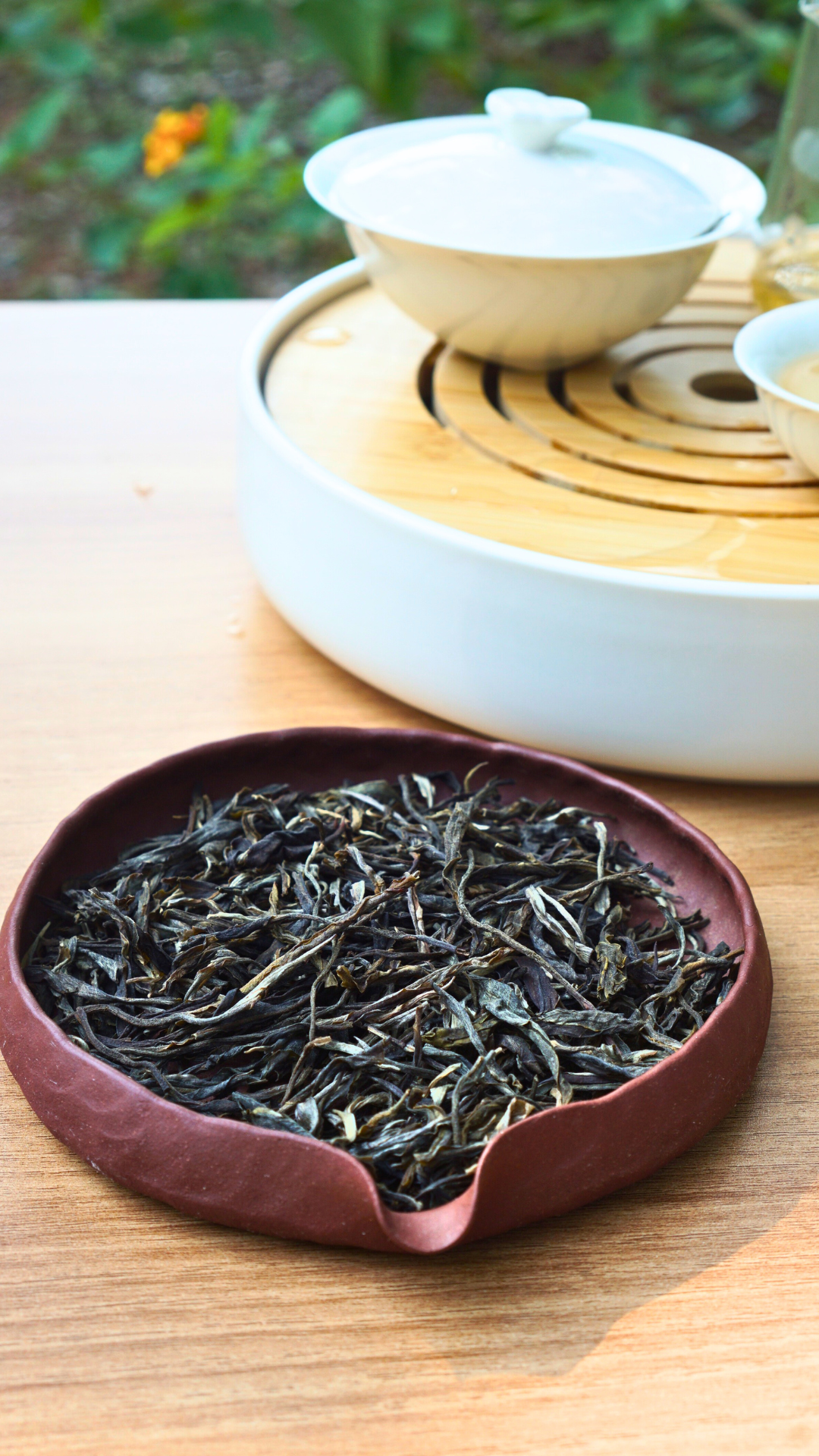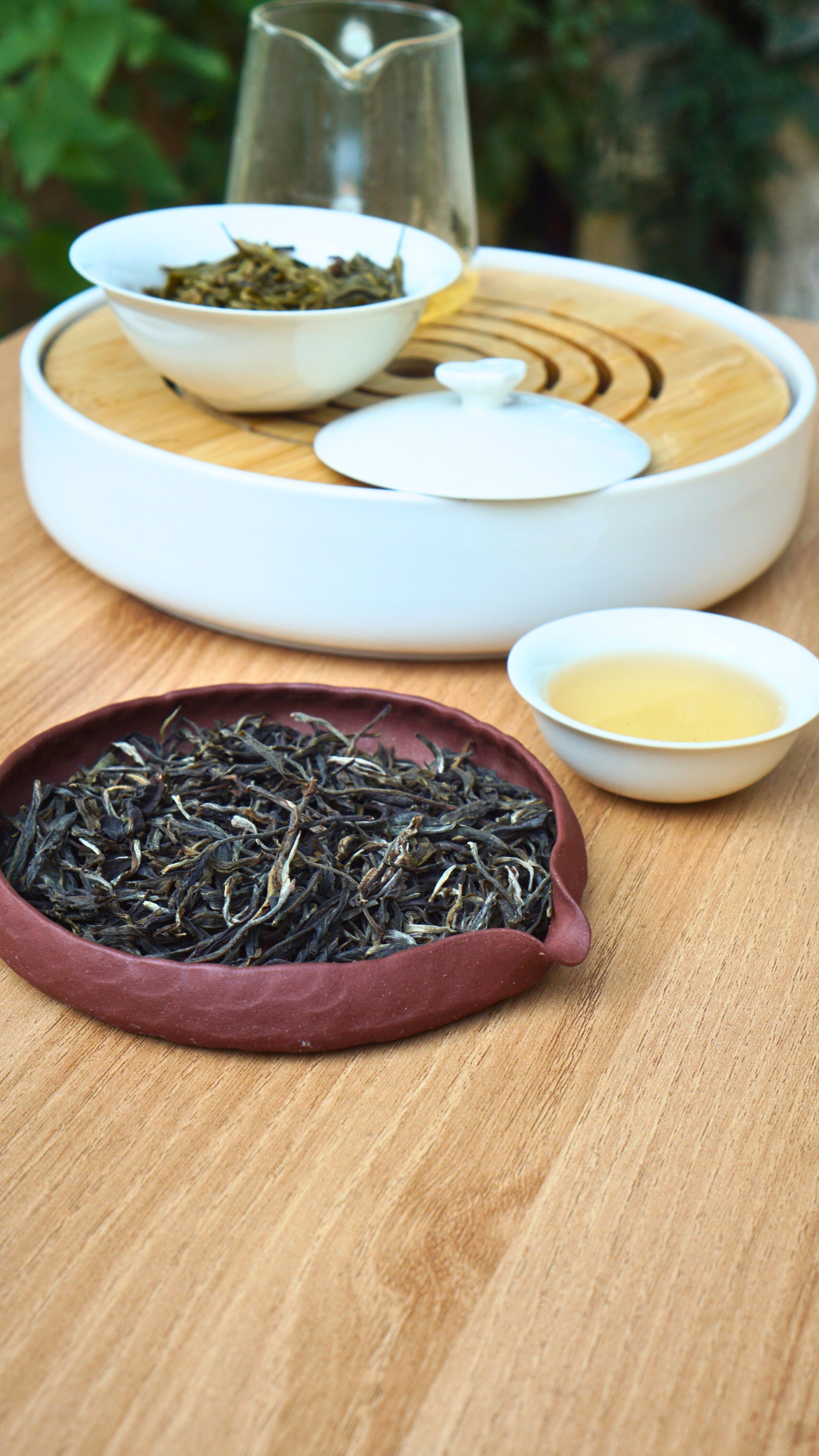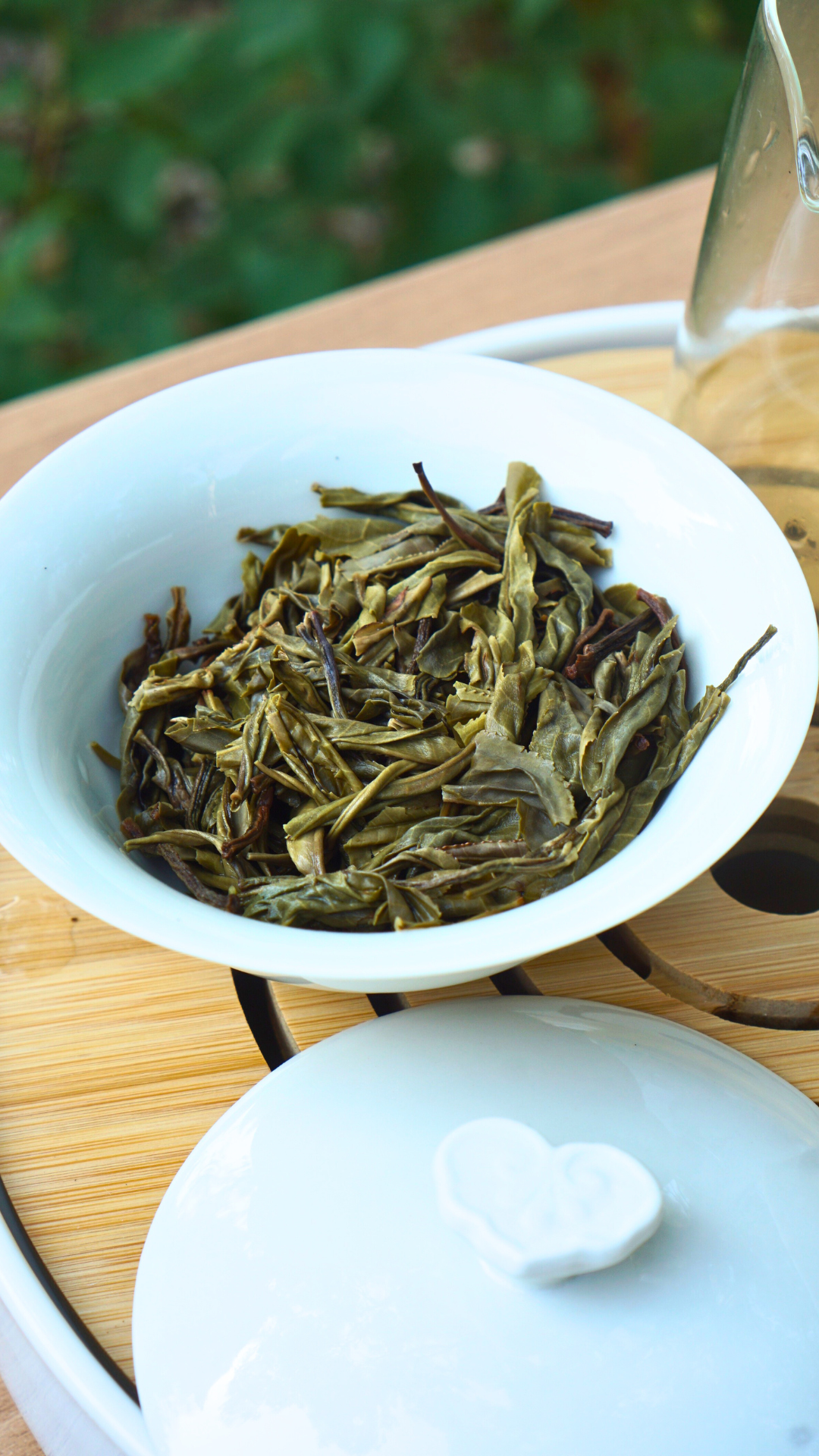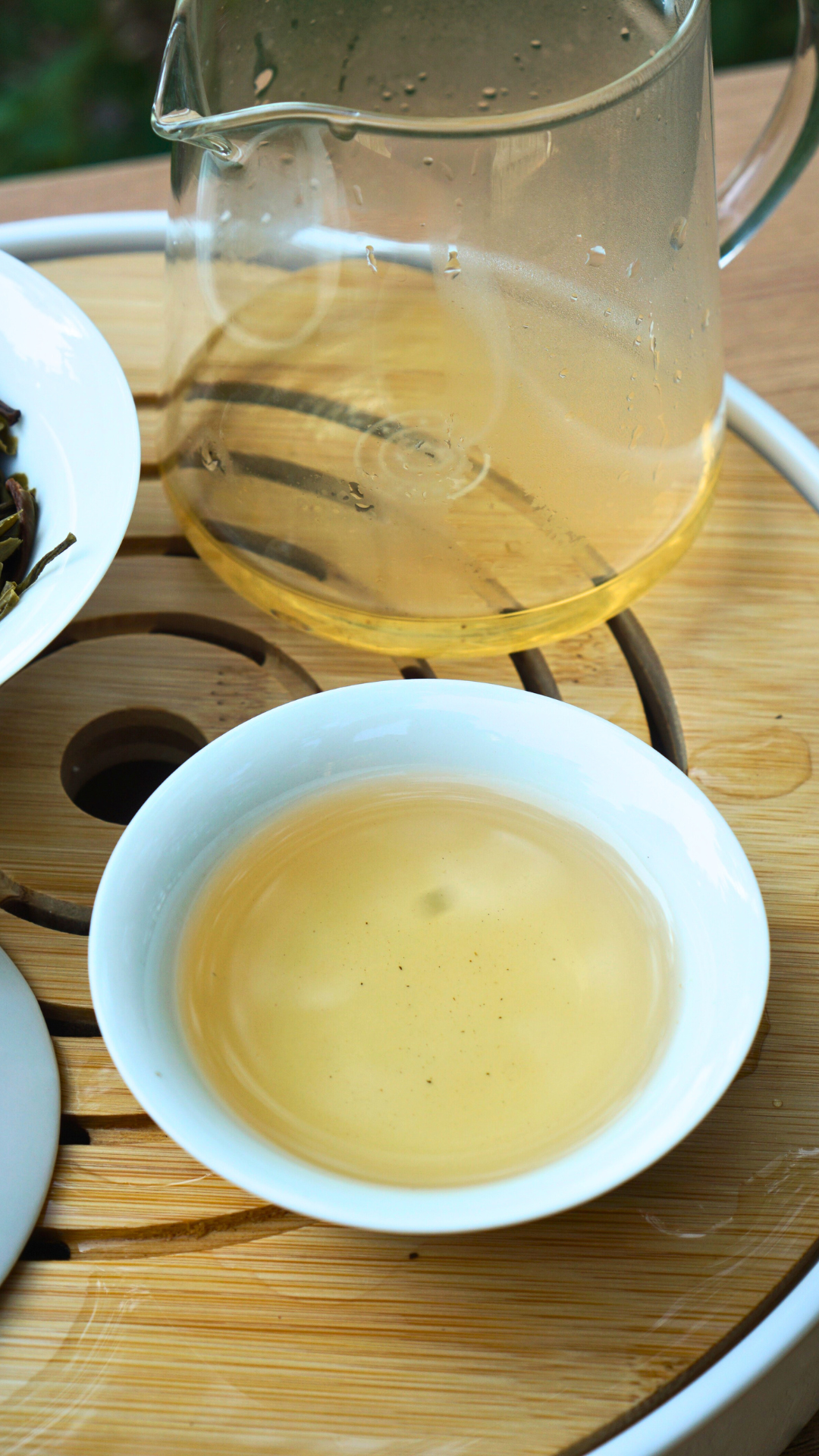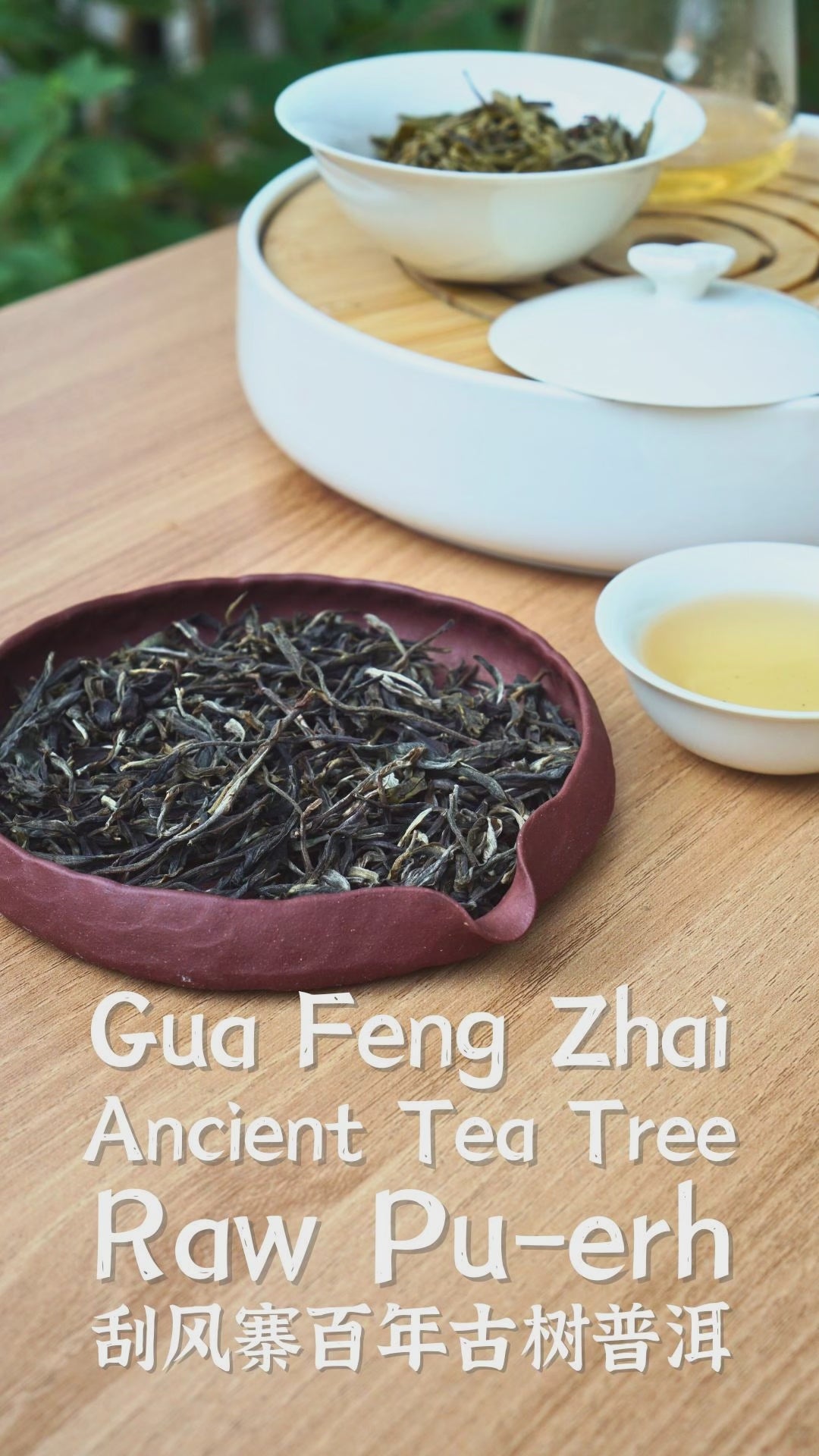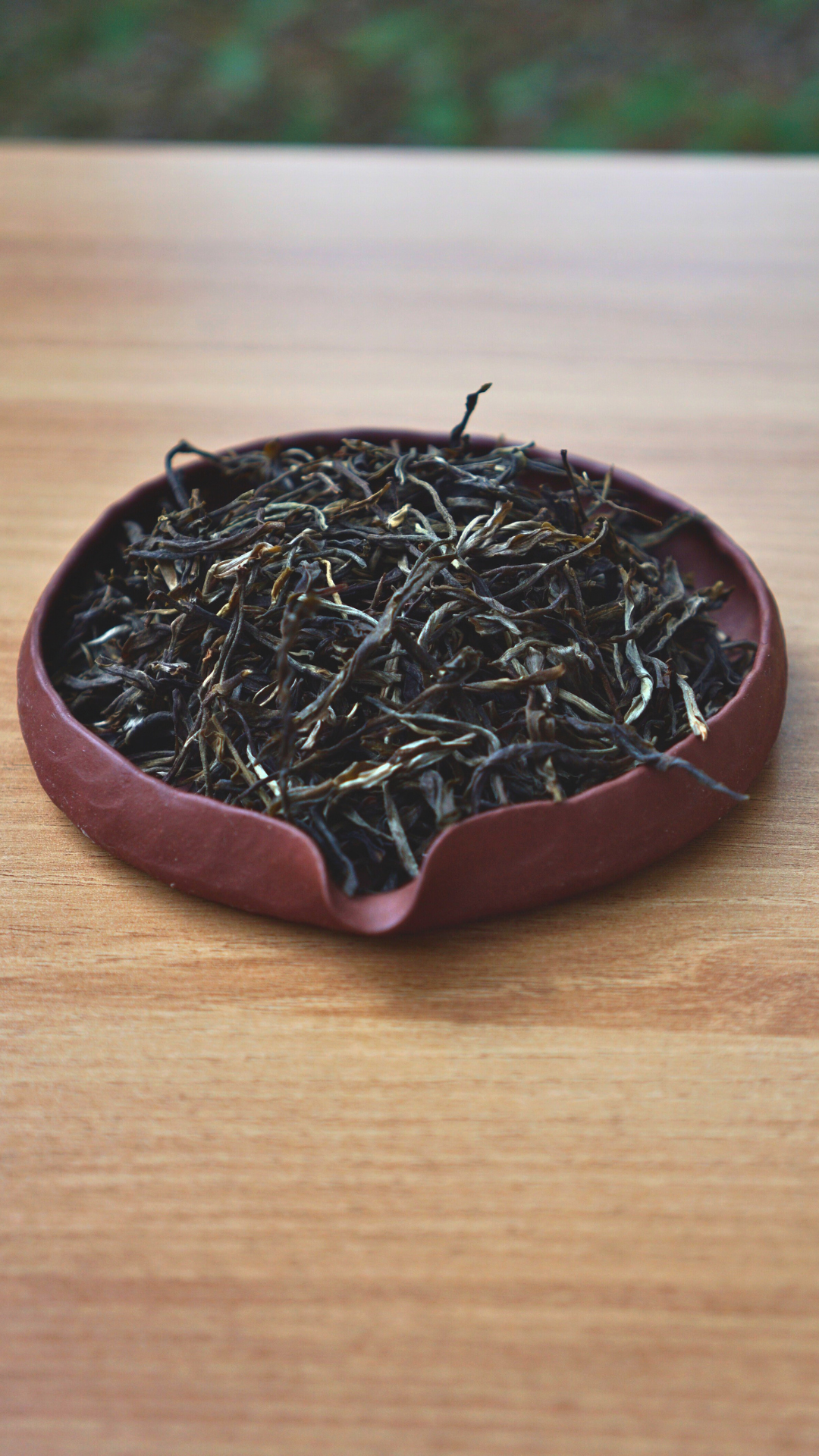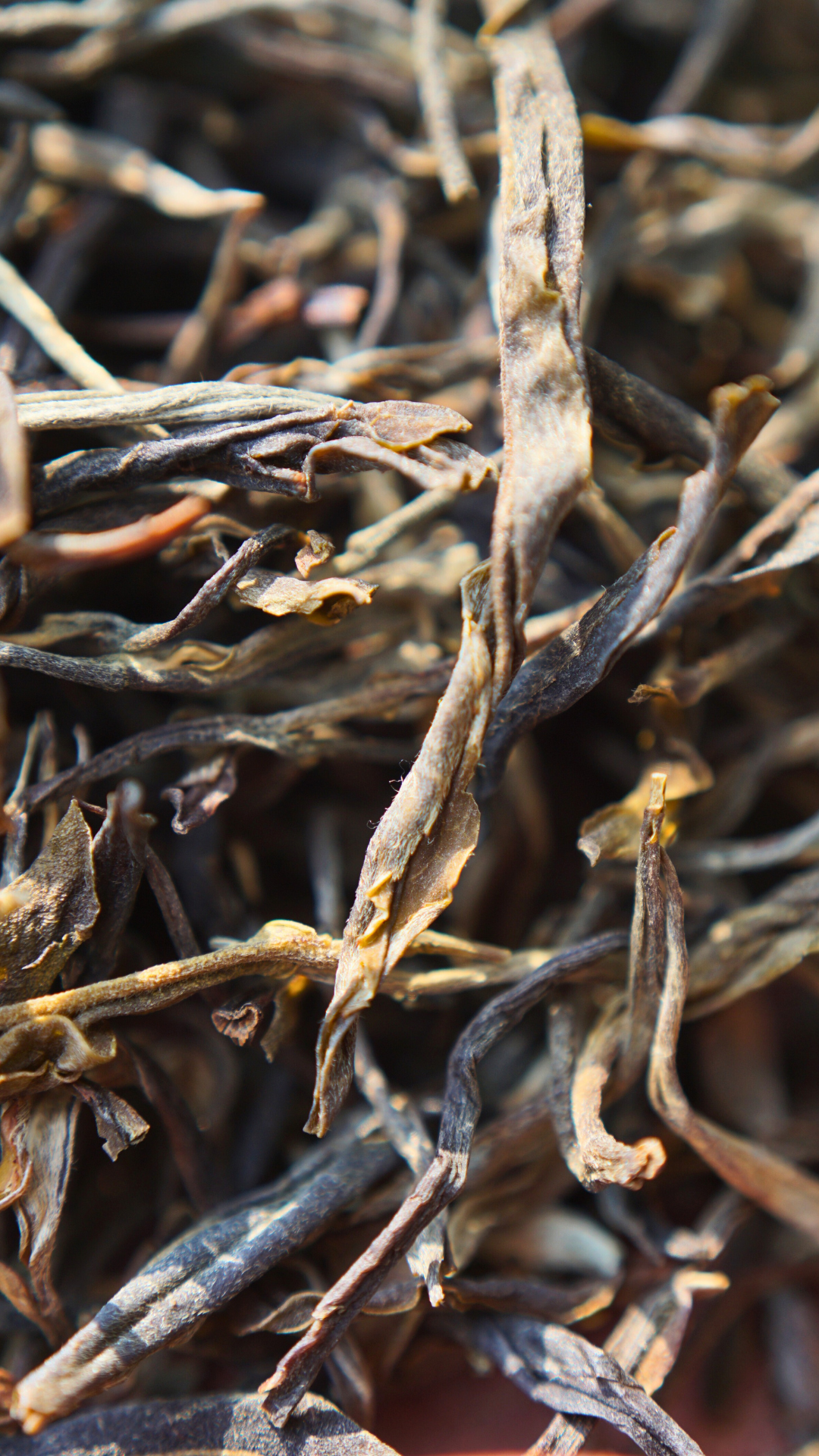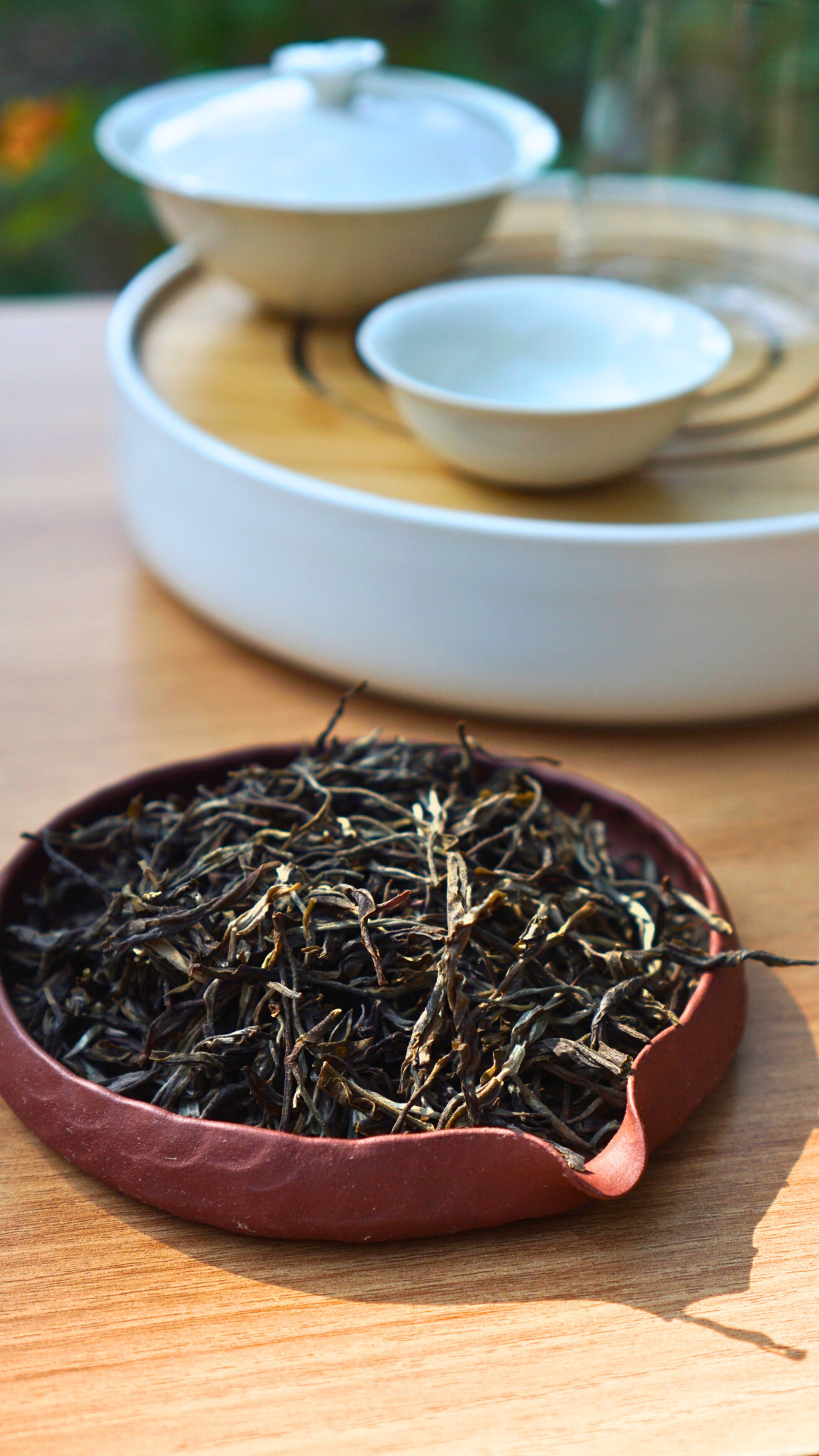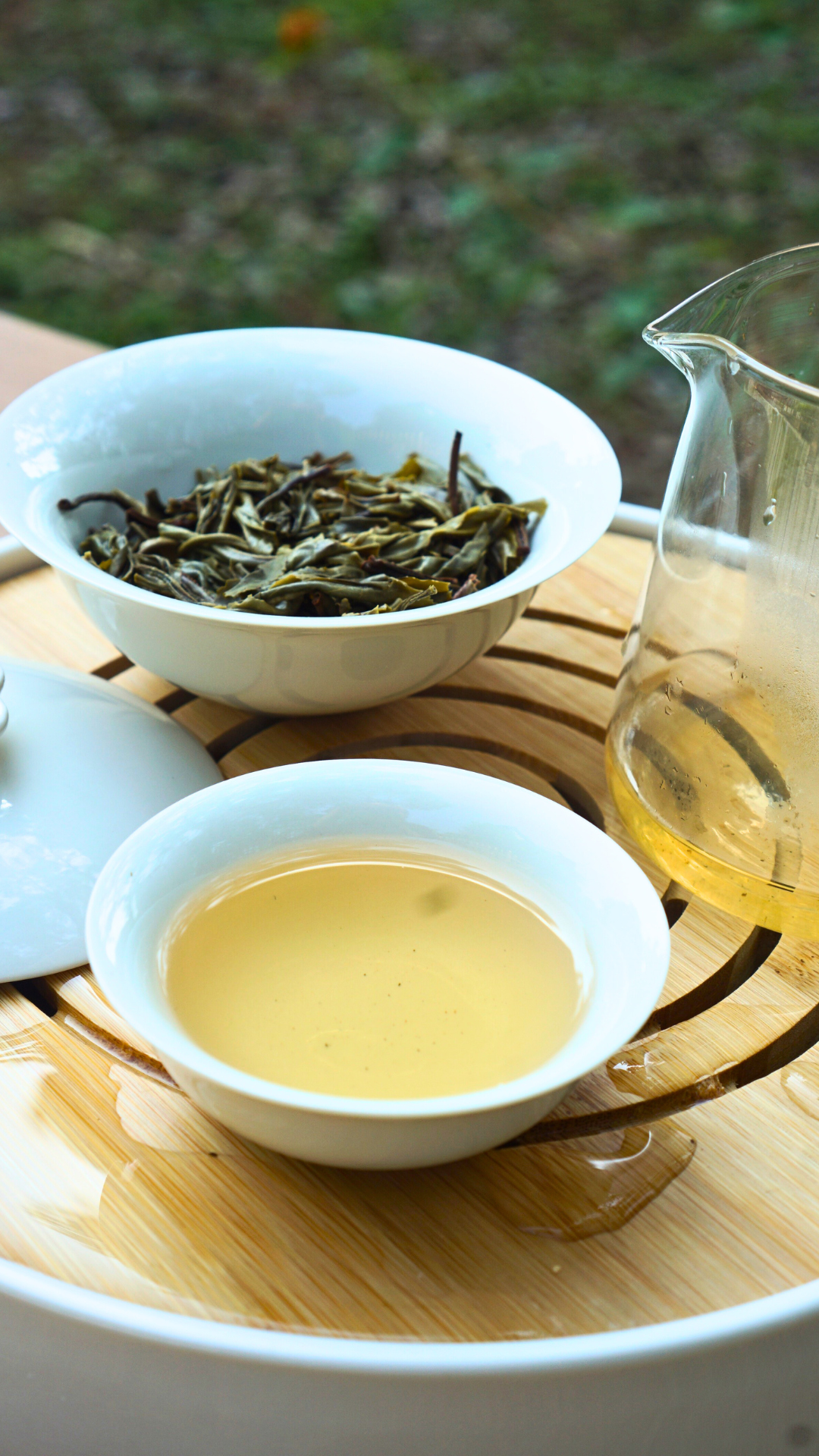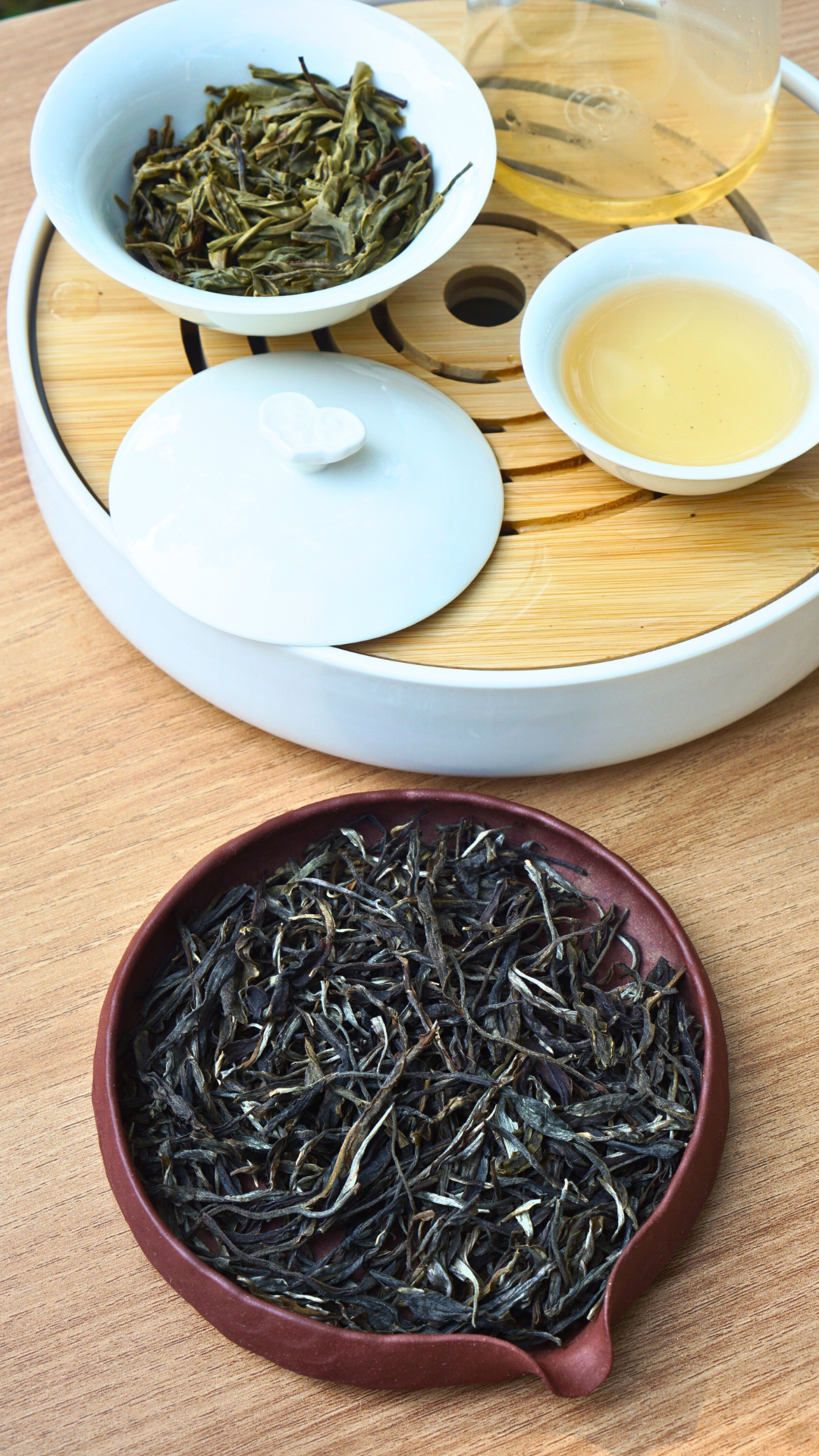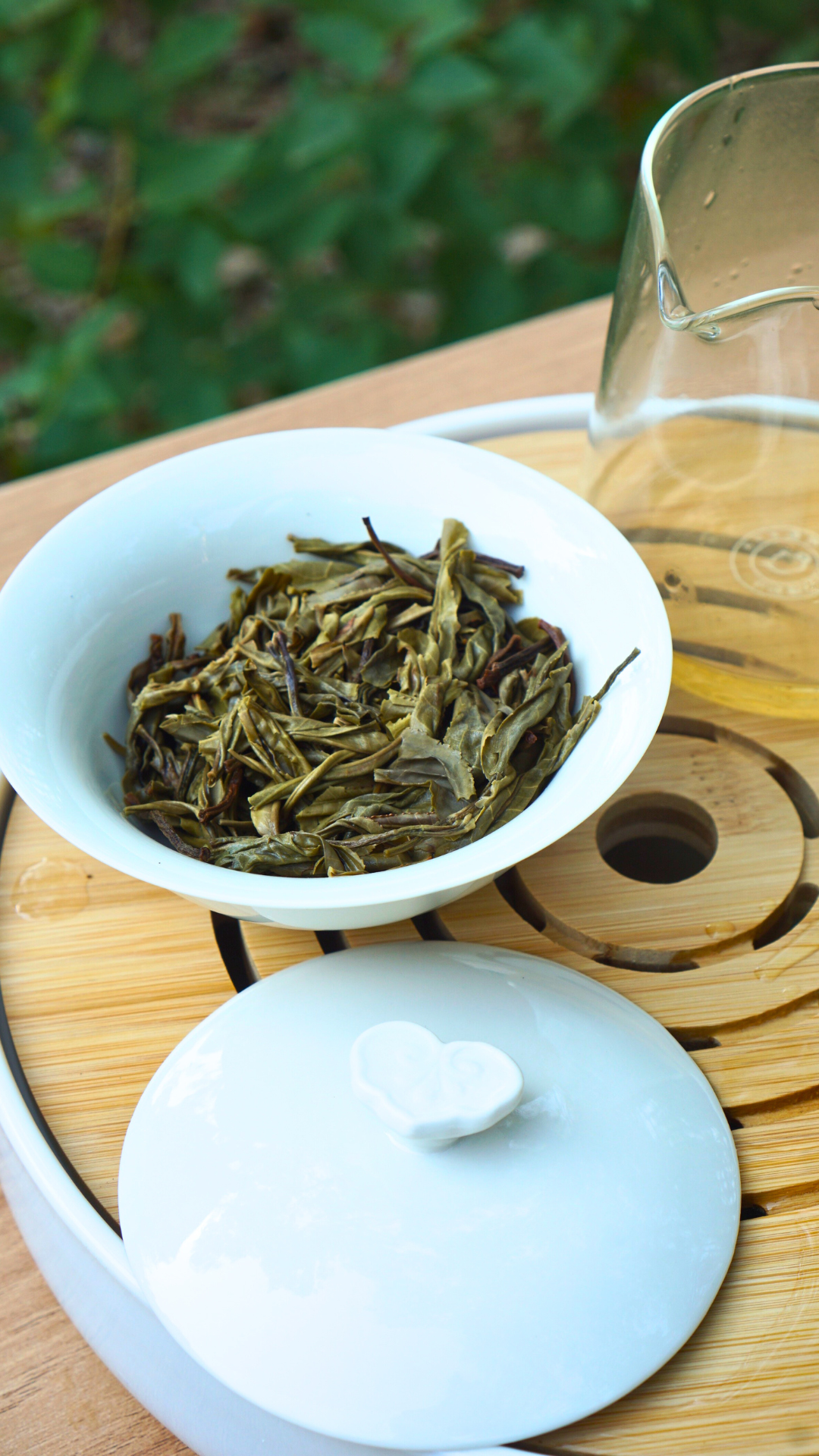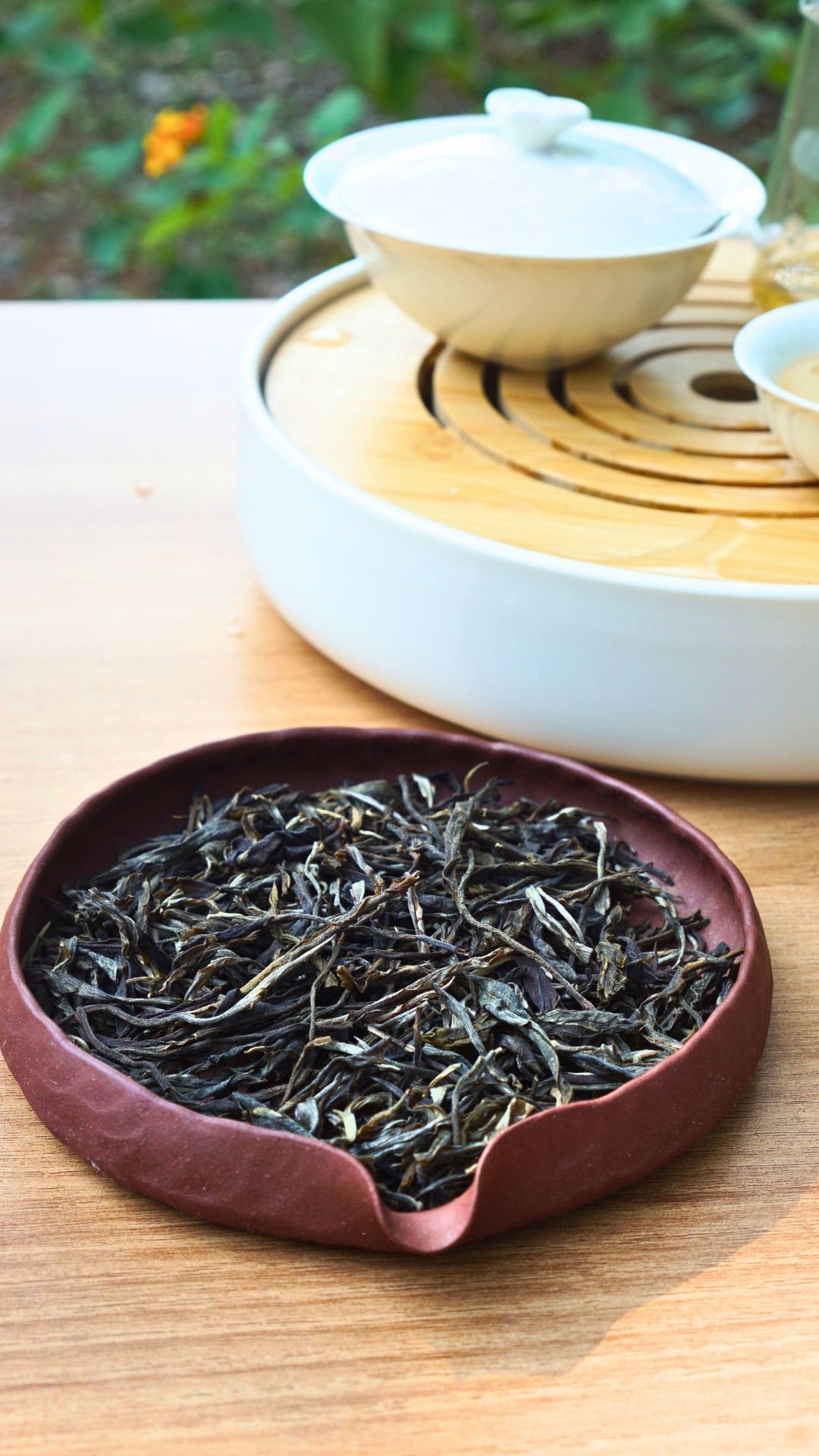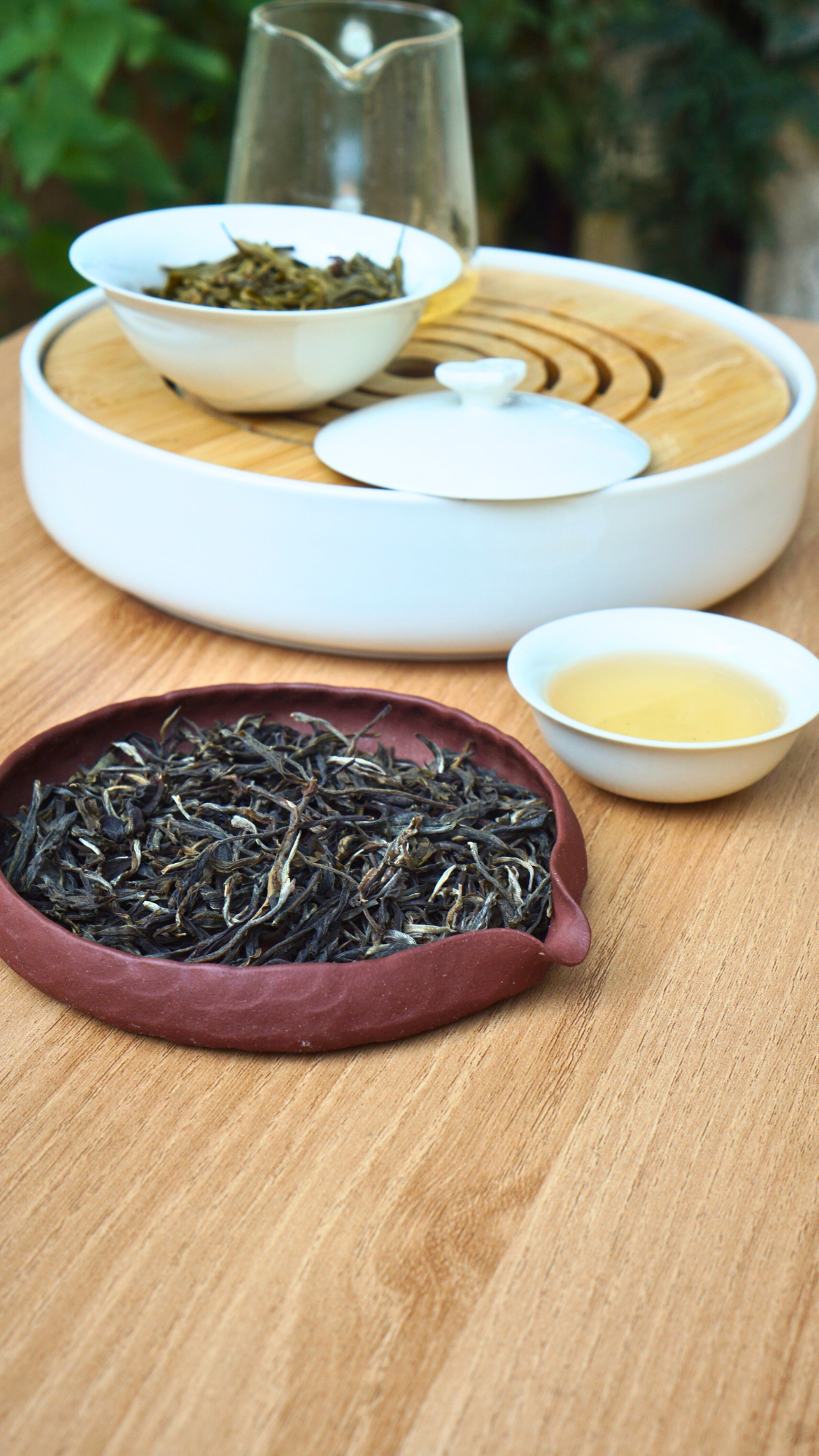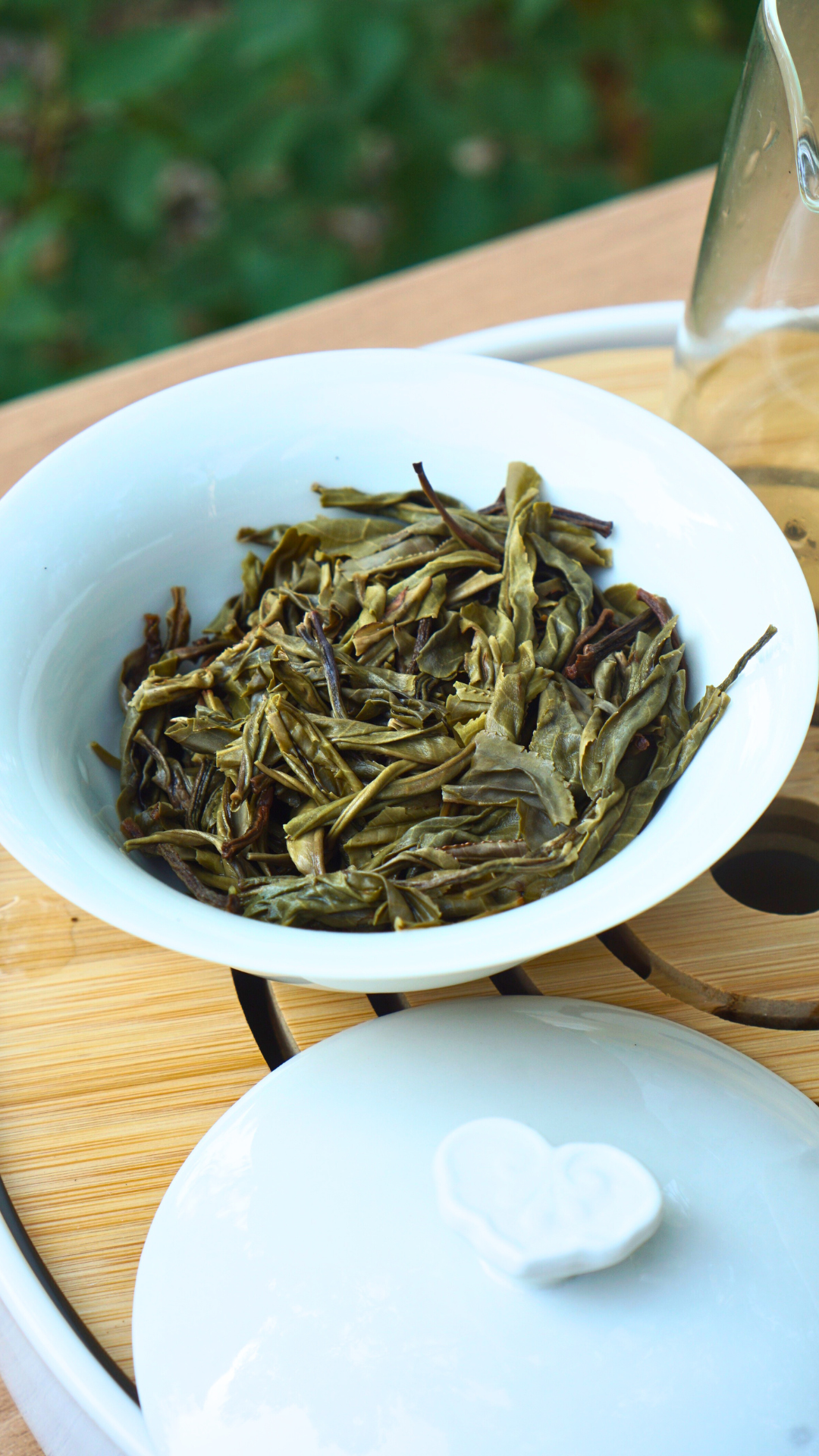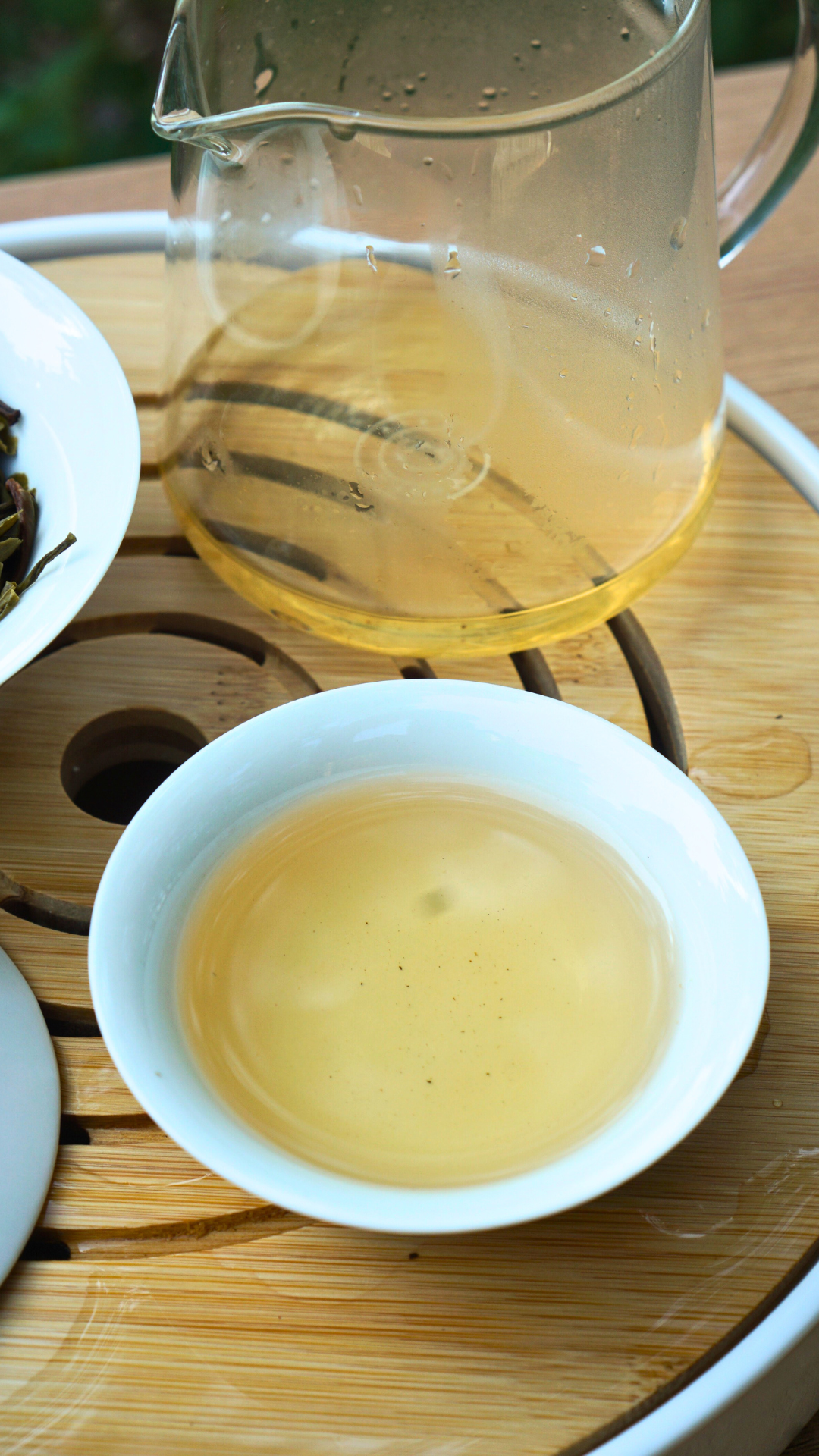Gua Feng Zhai Ancient Tea Tree Raw Pu-erh
Gua Feng Zhai Ancient Tea Tree Raw Pu-erh
刮风寨古茶树普洱生茶
This raw Pu-erh tea is harvested in the early spring from an ancient tea garden located about 30 kilometers south of Ma Hei(麻黑) Village Committee. The tea garden belongs to Gua Feng Zhai(刮风寨) in Ma Hei Village, Yi Wu Mountain(易武山), Mengla County( 勐腊县), part of the Xi Shuang Ban Na(西双版纳) tea-producing region. Situated at an altitude of about 1,200 meters, with an average annual temperature of approximately 17°C, the excellent natural conditions and ecological environment here provide the tea trees with abundant nutrients and inner vitality.
The tea trees in the tea forest are all centuries-old ancient trees. Growing in a primeval forest environment, the tea trees receive limited direct sunlight, mostly diffused light. This leads to slower tea leaf growth, but it results in exceptional tea quality with a rich taste and a strong, wild mountainous character. The fresh tea has a bitter and astringent taste but offers a quick returning sweetness, pronounced floral fragrance, and a long-lasting aftertaste, with a clearly distinctive Yiwu Mountain(易武山) charm.
The ancient tea trees from Yiwu Gua Feng Zhai belongs to the Mengku large-leaf varietal. The fresh leaves are thick, tender, soft, and highly resilient. The tea buds have abundant and plump white hairs.
The dried tea leaves have distinct, bright strands that are thick, bulky, and covered with visible tea hairs, displaying excellent toughness.
The brewed tea's liquor is bright orange-yellow and crystal clear without any impurities.
On careful tasting, it exudes a rich aroma of flowers and fruits, with a high, persistent fragrance that lingers. The tea leaves a noticeable aroma in the cup. The tea soup is smooth and full-bodied, initially bitter upon entry but swiftly transforming into a potent sweetness and salivation, ending with a deep and long throat feel, rich with the wild essence of ancient mountain forests.
The infused leaves are tender, uniform, yellow-green, and glossy, exhibiting flexibility and resilience.
⚠️ Avoid drinking this tea on an empty stomach, as it may cause “tea drunkenness” and be too stimulating for the stomach, especially sensitive ones. It’s recommended to pair the tea with some snacks.
Picking and Processing
Picking and Processing
Raw Pu'er tea is made from fresh leaves of the Yunnan large-leaf tea trees that grow in the environment conditions suitable for Pu'er tea production. It is processed into sun-dried green tea through processes like fixing (sha qing), rolling, and sun-drying, or further steamed and pressed into compressed tea. Its quality characteristics are: dark green appearance, clean and lasting aroma, rich taste with a sweet aftertaste, green-yellow and bright liquor, and thick yellow-green infused leaves.
The processing steps for loose raw Pu'er tea that has not undergone compression are generally as follows:
Picking
Hand-picked with one bud and two or three leaves. The leaves are withered and spread out to cool in a ventilated, sunless, and dry area, placed on bamboo mats. The time depends on the moisture content of the fresh leaves and the temperature and humidity at the time, generally more than half an hour.
Fixing (Sha Qing)
High-temperature quick fixing removes grassy flavors, evaporates some water, and facilitates shaping during rolling.
Rolling
This can be done by machine or by hand. The tea leaf cell walls are broken, allowing the tea juices to dissolve easily into the tea liquor during brewing, improving extraction rates, and shaping the leaves into strips.
Sun-drying
The rolled tea leaves are naturally sun-dried under sunlight, preserving the organic compounds and active substances in the tea to the greatest extent. Sun-dried green tea retains the essence and original flavor of the tea leaves.
The following are the subsequent processing steps for compressed raw Pu'er tea (e.g., tea cakes, Tuocha, etc.):
Molding
The sun-dried raw tea undergoes refinement processes such as sifting and cutting to create raw materials for various forms of compressed tea.
Higher-grade young leaves are not used for compressed tea. Generally, grades 1–3 are sold as loose tea, grades 5–9 are pressed into cakes, and grades below 9 are made into brick tea.
Steaming and Pressing
The prepared tea materials are softened with steam, then pressed into different shapes using various molds.
Drying
Dried in drying rooms at low temperatures. Generally, Pu'er tea requires a moisture content of less than 10%.
Brewing
Brewing
Loose-leaf raw Pu-erh tea is mainly divided into two categories: new tea and aged tea, with aged tea generally consisting of mid-aged tea.
Sun-dried pu-erh loose-lef tea in the new tea stage, such as tea stored for about 1 to 4 years, is characterized by a prominent fragrance and a fresh, brisk taste in the tea liquor. Especially for new tea from the current year, some leaves may still have a slight raw taste, but this will diminish or disappear as it ages and transforms during storage.

When brewing new raw tea, it is recommended to use a gaiwan. Opt for one with a slightly larger capacity, such as around 150 milliliters, or use slightly fewer tea leaves. This allows the tea leaves more space to unfold, enabling the flavors of the tea liquor to be better infused.
The water temperature can be just-boiled water, allowed to sit for a few seconds before pouring. Pour water in using a steady high stream, which helps to better release the tea's fragrance. After pouring, for the first few brews, there is no need for steeping time—pour the water and decant it immediately. As the number of brews increases, you can slightly extend the steeping time, which helps achieve a more balanced flavor and taste in the tea liquor.
Throughout the brewing process, it's advisable to leave the lid slightly open, as the taste of new tea is primarily fresh and fragrant. Leaving the lid open prevents the tea leaves from becoming stewed, thereby enhancing the fragrance and flavor of the tea liquor.

For loose raw Pu-erh materials that have been aged for a slightly longer period, such as 5 to 8 years or more, the taste is markedly different from new tea. The aroma is predominantly honey-like, and the tea liquor has a richer and smoother taste.
To better showcase the honey fragrance and the rich, mellow flavor of the tea liquor, it is recommended to use a Yixing clay teapot for brewing. You can directly use boiling water to brew aged loose-leaf tea stored for about 5 to 8 years. Use a steady high pour to better enhance the fragrance of the tea liquor.
During the brewing process, leave the teapot lid slightly ajar at the spout to allow the tea leaves to breathe.
Raw Pu-erh Tea Storage
Raw Pu-erh Tea Storage
Storage Environment for Loose Leaf Raw Pu'er Tea:
Methods for Storing Loose Leaf Pu’er Tea:

First, clean the purple clay container thoroughly. Once the container is dry, you can store the loose-leaf Pu'er tea in it.
Note that although purple clay containers are excellent at blocking light and resisting moisture, it is still recommended to keep them away from light to avoid excessive heating due to sunlight. Additionally, due to the microporous nature of purple clay, care must be taken to ensure the storage environment is odor-free.

Choose cardboard boxes with adequate thickness and durability. First, pack the loose-leaf Pu'er tea in clean, food-grade plastic bags or aluminum foil bags, and then place them inside the cardboard box for storage.
Do not place cardboard boxes directly on the ground, as they can absorb moisture from the floor. It is best to place them on shelves or inside cabinets.
Avoid direct sunlight.
Do not store cardboard boxes in kitchens, dining areas, or other environments with complex odors.
Properly stored loose-leaf raw Pu'er tea can be preserved for ten years or even longer. The longer it is stored, the better its flavor will become, becoming smoother and richer over time.
- Loose Pu-erh Tea
- 500g/pouch
- Free Shipping
Couldn't load pickup availability
